Going on a camping trip or on a hike can be a very fulfilling experience: after all, it’s you and the wilderness. However, accidents do happen and you may injure yourself. In this article, we’ll let you know what the most common injuries are when you’re outdoors, how to tell if a cut is infected, as well as how to treat it.
[the_ad_placement id=”in-text-1-type-r”]This will help you understand what the most likely perils are where you’re going, and can help you plan better when it comes to the medical tools you need to pack, and likewise learn how to help someone who may not realize they have a dangerous wound.
The most typical camping injuries
Depending on where you’re going, the environment you’re going to be in, the animals, plants and bugs that you’re going to share space with, you can be prone to a plethora of accidents. That being said, the most usual injuries that affect campers and hikers are:
Weather related
Even if you go fully prepared on your camping trip, you should know that weather is a serious factor which may affect your wellbeing. Besides, if you don’t have the proper clothes or equipment, you can find yourself affected by:
- Frostbites
- Heat strokes
- Dehydration
Frostbites occur when it’s too cold outside and you’re not wearing gloves, a hat or warm enough shoes. The first affected by frostbite are your extremities, and if you’re not careful about protecting them, they may even be amputated. The dangerous thing here is that you don’t even see the frostbites coming – you think you can take the cold and then you just wake up with numb fingers and toes.
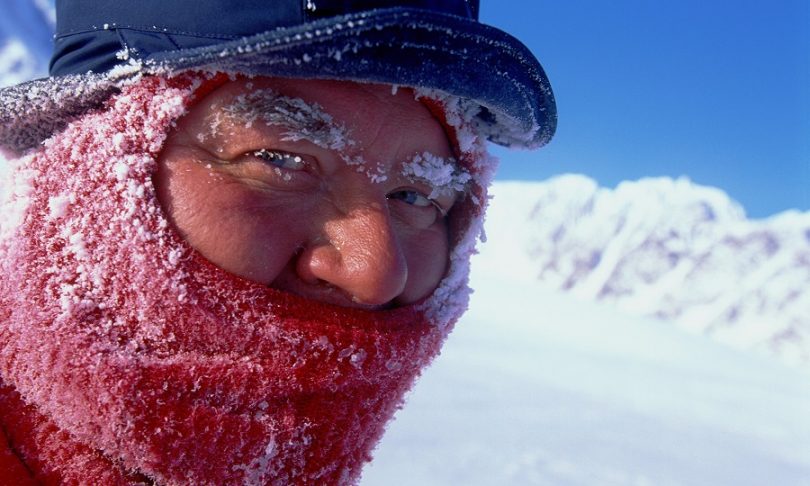
Heat strokes are also pretty dangerous, since they can even render you unconscious or delirious. The best thing to do is to pack a hat with large brims, so that the sun doesn’t wear you down too much. Pack light color clothing, and protect yourself from the sun with sunscreen even if it’s windy and you feel cool.
Dehydration occurs when you don’t drink enough water, so be sure you’ve taken a sufficient amount with you. Moreover, it’s always a good idea to take a sip once in a while even if you don’t feel thirsty – your body can play tricks on you, and you can be thirsty without realizing it.
Check out our piece on the dangers of overhydration and how this can pose a risk to your health.
Rashes
When you’re sleeping and moving in a different kind of environment that you’re used to, your skin may feel the strain. Consequently, all sorts of new plants and dirt that you come in contact with may irritate your skin, but the most common types of rashes are caused by plants like poison ivy and oak. If this happens, the best course of action is to clean the rash with plenty of water.
Other types of rashes can be caused by sunburns, if you’re not careful to protect your skin from the burning sun rays. Remember our advice about the large brimmed hats? Well, if you forget it, you can still treat sunburns with a little aloe due to its soothing properties, as well as drinking lots of water to cool your skin temperature.
Bites
A mosquito bite is quite unpleasant, but what happens if a larger animal manages to bite you – like a snake? Besides, it doesn’t even have to be a large one; it can be as small as a termite or a spider. But if you stumble upon a poisonous wildling, you may find yourself in a heap of trouble. See our piece on how to choose the best mosquito repellent to keep you safe from these pests.
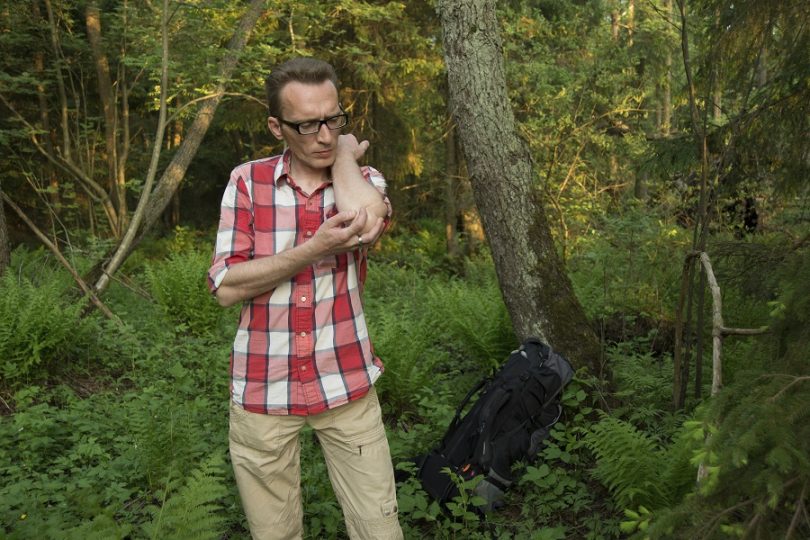
On the off chance you’re bitten by a poisonous wildlife creature, the best thing to do is to bandage the bite very tightly, and even immobilize the whole affected limb until you get to the hospital. Otherwise, just remember to wear your insect repellant and have a fire ready to burn off the ticks that may have crawled on you.
Blisters
These nasty little injuries can appear because of all sorts of reasons, but chafing is the typical cause that gives birth to blisters. For example, if your trekking shoes are too loose, that might lead to your foot having too much space inside the shoe, that way allowing friction between the sock and the foot. If you’re out hiking for a lot of time, chances of blisters increase proportionally.
Hence, to prevent blisters from appearing you should prevent friction. To this extent, you can choose better shoes and moisture-wicking socks, and can even opt for sport-specific equipment, seeing as every trip is different. See also our article on how to prevent blisters, it’s a must read!
Fractures and sprains
Rock climbing and passing through steeper ground are the number one causes which lead to sprains, if your ankles or wrists are hurt. As such, you may lose your balance and trip or twist your limbs.
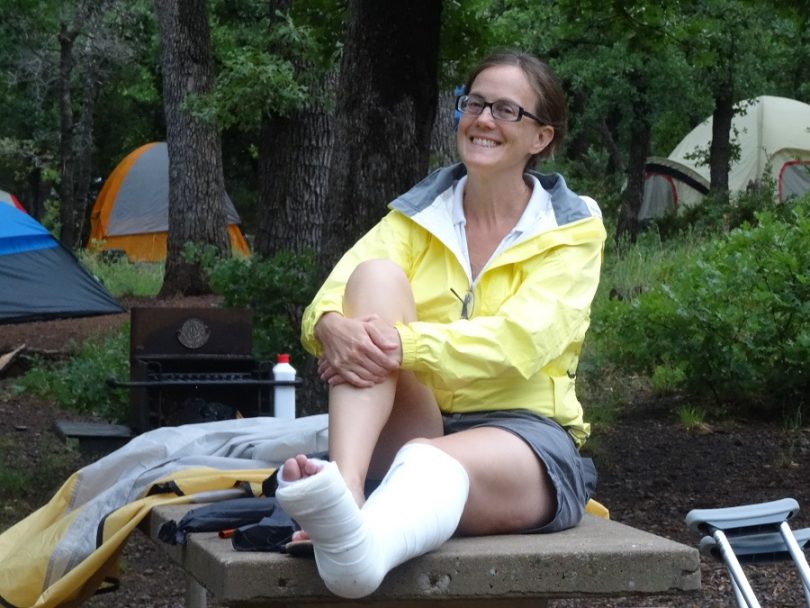
The action to take is to immediately place a splint on your limb and tie it with medical tape, so that it’s fixed and in less danger of further injury. You can ease your pain as well as reduce the inflammation with an ice pack.
Bone fractures are more dangerous and also more painful, so immobilizing your limb with a splint is the thing to do before getting to the hospital fast.
Cuts and open wounds
Because of their risk of becoming infected, cuts and open wounds require urgent care. The worst part is that they can go unnoticed until it’s too late. In addition to this, you should also learn how to recognize an infected cut and how to treat one before actually going to the ER, as the first few hours are crucial.
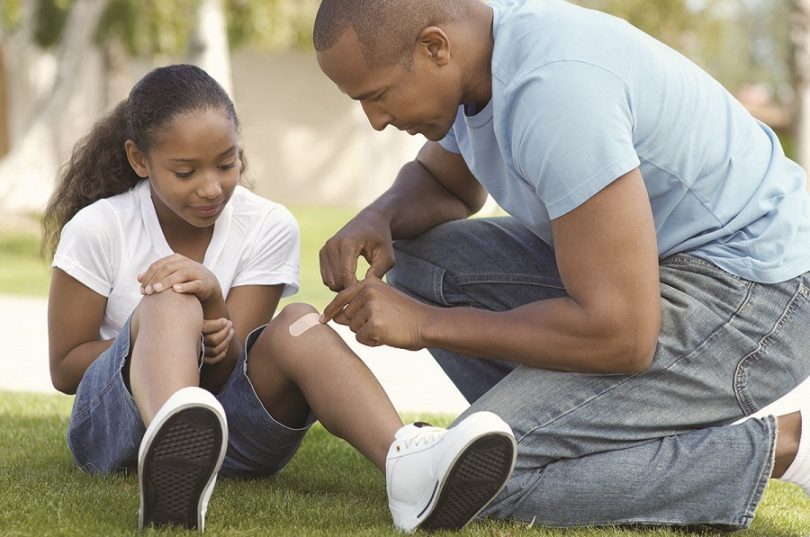
That’s why it’s highly significant to have all the stuff you need in your first aid kit, so that the wound can be cleaned and treated properly. These items are:
- Hydrogen peroxide.
- Cotton swabs.
- Bacitracin
- Bandages
- Medical tape.
If you don’t have hydrogen peroxide to disinfect the wound, it’s a good idea to wash it with lots of water. You can use cotton swabs to get to the trickiest parts of your cut and make sure that you scoop every foreign body out. After the cut is clean and dry, put bacitracin on top of it so it can heal faster, bandage it carefully and then secure the bandages with medical tape. Make sure you have a complete first aid kit to keep you prepared.
What happens when you cut yourself?
Understanding the mechanics of an open wound can help you treat it better. As such, the first thing your body does when the skin is pierced is to prevent unnecessary blood lose by clotting. Therefore, specific blood cells called platelets are sent to the injury spot and gather around the cut to help your blood coagulate faster. They in fact work as a sort of barrier against the blood that rushes out of the wound.
[the_ad_placement id=”in-text-2-type-r”]That’s why it’s important to clean the cut properly and apply bacitracin – it can only help coagulate the blood faster. However, the clot itself is made out of blood cells. One of them is called fibrin which, as its name tells us, looks like a fiber or a thread. Its role is to maintain the clot in its place so that a scab can appear over the cut.
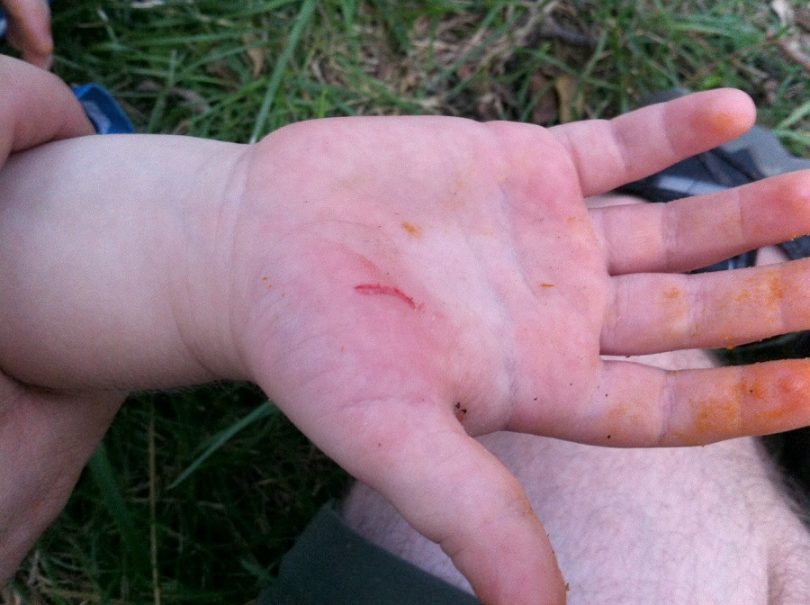
At this point, two things can happen. One is that the scab protects the wound from bacteria or other potential injuries that can affect the cut more than any other uninjured part of your body. Without this scab, an infection may occur or even other possible damages to the wound.
The reason why scabs are so effective in protecting your cut is that they are basically a hard crust. If things go well, this crust fulfills its role of protecting the wound and deters the emergence of infections. In this case, it will fall off by itself at some point and maybe leave you with a nice scar to act as a reminder.
The other thing that can happen is that the blood clot is penetrated by bacteria or dirt, so that the scab can’t quite form properly. In this case, your cut becomes infected and the most common causes are:
- Bacteria on the instrument or rock you’ve cut yourself with.
- Dirt that isn’t properly cleaned.
- Bacteria that manage to get to the wound when you don’t thoroughly disinfect it.
- Foreign objects that get beneath your bandage.
- Further cutting or irritation to the wound which prevent the scab from forming.
Symptoms of a possible infection
If you have cut yourself of pierced your skin accidentally when camping or rock climbing, it’s best not to ignore the following symptoms:
- Pain
- Swelling
- Redness
- Warmth on the cut
- Pus or drainage that leaks from the wound
- Fever
- Swollen glands under the chin or in the neck, armpits or groin.
All these signs are your body’s way of telling you that something is wrong.
If you’re in pain that means the cut wasn’t properly cleaned and the foreign object that still lingers there is preventing your body to form the clot. That’s why it’s hurting you: the clot wants to form itself around the dirt or dust speck that still remains trapped in the wound.
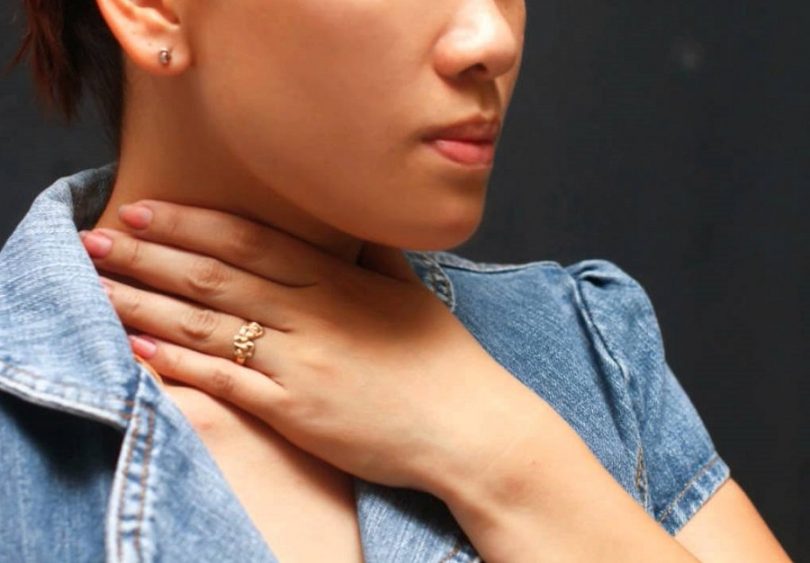
An additional mark which shows that the cut wasn’t accurately cleaned is swelling. This may also indicate that bacteria have protruded your skin and your blood is sending in reinforcements to fight them off.
The same happens with redness and warmth: your blood is actively trying to prevent the infection from further developing, which is why it irrigates the cut. If you’ve reached the stage of white or yellowish pus draining from the wound, it means that your body is forming it in order to expel the thing that’s hindering its healing process.
Fever most often indicates a bacterial infection, and it occurs because your body temperature has risen in an effort to fight off the dangerous bacteria.
The swollen glands show that your immune system has been affected, and therefore it forms increased lymphatic nodes.
That being said, it’s also important to note that the location of the wound can be a contributing factor to the risk of infection. The areas more prone to infection because they offer a moist, shaded bacteria-friendly environment are:
- Anal area
- Genital area
- Skin folds
- Space between the toes
Infected injuries in these areas are likewise more likely not to be noticed until it’s too late. If you have a cut on your hand or on your leg and you’re wearing something that exposes it to air, chances are smaller for an infection to develop, but it can still happen provided the cut is deep and can’t be thoroughly cleaned with the instruments you have.
Consequently, in these cases the cuts get infected deeper in the skin layer and you may feel the pain like coming from somewhere further inside your limb.
You can also be more prone to developing cut infections if you have diabetes, peripheral arterial disease, or immune system deficiencies.
The risks of an infected cut
There are many other conditions which emerge from an infected cut, and that’s why it’s always a good idea to prevent your current condition from escalating. Don’t ignore the signs we’ve listed above and don’t hesitate to go to the ER if you’re really worried. It can actually save your life, because an infected cut may lead to nasty things like gangrene, septicemia, staph infections, or a toxic shock.

Since these risks are pretty dangerous, we’ll examine each of them individually to give you a better idea why you should never ignore the signs of an infected cut.
Gangrene
Gangrene is a result of cutting the blood supply from the infected area, which causes the tissue to die. It’s also called wet gangrene because the tissue around the wound will swell and pus will appear. The problem here is that an infection like this can spread very quickly and put your life in danger.
The symptoms include:
- Coldness
- Dry skin which goes from blue to black.
- Fever
- Numbness
- Pain
- Pus
- Swelling
Septicemia
Wet gangrene can also lead to septicemia, which is when your blood gets infected and it really is a must to get to a hospital as soon as possible. You’ll know you’re in the first stages of sepsis if you experience:
- Body pain and rash.
- Change in body temperature.
- Cold, clammy, and pale skin.
- Confusion
- Light-headedness.
- Low blood pressure.
- Rapid heartbeat.
- Shortness of breath.
Staph infections
Apart from these, staph infections are also pretty common to develop after your cut has been infected. They are caused by a germ called Staphylococcus, which is a bacteria that even healthy people have on their skin or in their noses.
However, if the Staphs get into an open wound that it’s also deeper, they can prove quite dangerous. From your bloodstream, Staphs can even get to your lungs and heart, as well as bones and joints. Needless to say, they can wreak havoc and give you really big health issues if not treated appropriately.
Since the symptoms are very different from case to case, talking to your doctor is the best advice you can follow. You’ll get your blood tested and probably receive some antibiotics after your infected area has been properly drained.
Toxic Shock Syndrome
If you don’t deal with Staph infections rapidly and correctly, you may reach the stage of the toxic shock syndrome. This is another medical issue that can prove deadly, and it’s a direct result of the toxins that Staphs produce inside your body.
As such, you may notice the following symptoms:
- A high fever.
- A rash on your palms and soles that resembles sunburn.
- Abdominal pain.
- Confusion.
- Diarrhea.
- Muscle aches.
- Nausea and vomiting.
How to treat your wounds
Treating an infected cut is something that can be done if you adequately deal with your wound and follow these steps.
Stop the bleeding
This is the first important step you need to make sure you’re doing. You need to stop the bleeding to help your blood clot faster. Conversely, if the bleeding doesn’t stop, this may show you that a foreign object is still stuck in your wound.
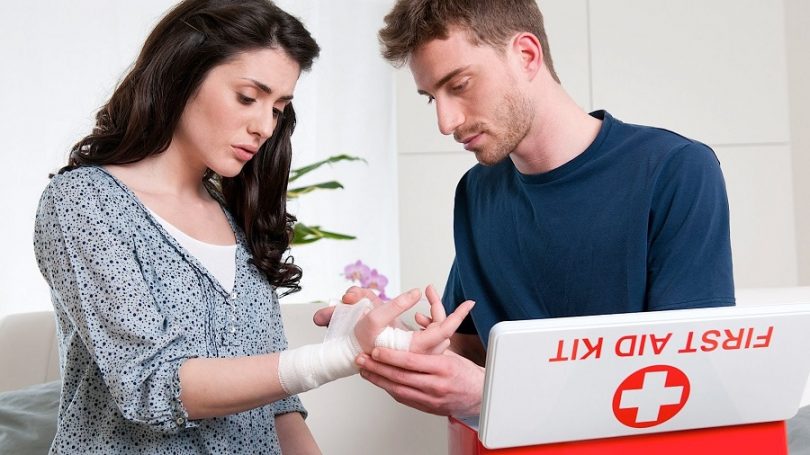
You can stop the bleeding by applying pressure to the area with something clean. You can use a bandage or even a towel, but you have to make sure you keep the pressure on for a few minutes before removing it.
At this point, you have to fight your urge to look beneath the towel to see if the clot has formed or not. Moreover, if the cut is on a limb, make sure to raise it up so you can deter the blood flowing in the direction of the wound.
If you can’t stop the bleeding or if the wound is way too big, it’s better to go straight to the hospital.
Clean the cut
At this point, you’ve probably managed to stop the bleeding and you can proceed to further cleaning your wound.
The steps you need to follow are:
- Wash your hands.
- Clean the wound with plenty of water.
- Pat the cut with a clean towel to dry it. Don’t scrub it, otherwise you’ll start bleeding all over again.
- Disinfect the cut with hydrogen peroxide.
- Apply your bandage.
Further maintenance
After the cut is properly bandaged, you need to make sure that the bandage itself is kept clean, to prevent infections. Besides from keeping it clean, the bandage needs to be kept dry because otherwise the scab can’t form properly and a moist environment is the perfect home for bacteria. The best choice would be to use a waterproof bandage, but if you don’t have one handy remember that it’s ok to change your bandages as often as you need.
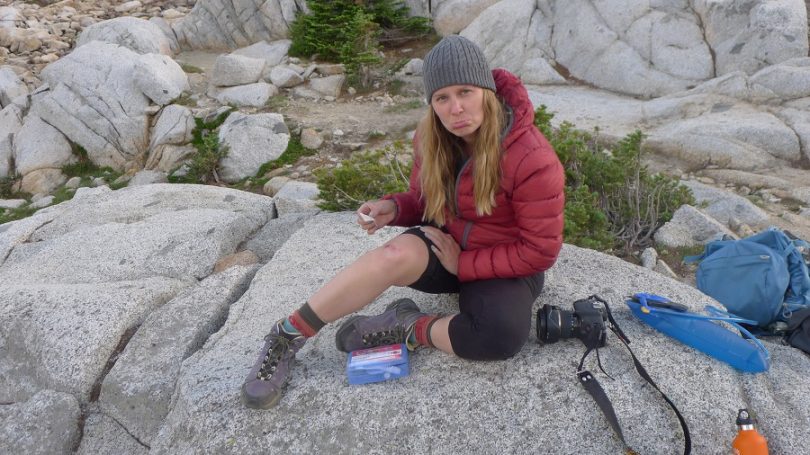
In addition to this, your pain receptors may be screaming if the cut is deeper than a simple braze, case in which you can take an over-the-counter painkiller like Ibuprofen for a day or two.
Additional steps in case you suspect an infection
As we’ve said before, if you think the cut is infected, the best thing to do is to go to the hospital. You’ll probably receive some antibiotics after your cut has been better cleaned and disinfected by medical staff.
[the_ad_placement id=”in-text-3-type-r”]But if you don’t have immediate access to the hospital, you need to follow the steps below to treat your infected cut:
- Clean your wound again and check to see if there is dirt or something else stuck in it.
- Disinfect your wound periodically with hydrogen peroxide or alcohol. This aims to fight off existing bacteria.
- Change your bandages often.
- If you can, expose your wound to the air and sun to facilitate scabbing.
- Apply ice to the infected area, to reduce swelling and redness.
- Apply some aloe on the cut, it can accelerate the healing process.
- Take Paracetamol – apart from being a good painkiller, it also has some antibacterial properties and can help with your fever to some extent.
- Drink plenty of water to keep yourself hydrated and less prone to fever.
That being said, cuts and open wounds are not to be trifled with, but nor are the other typical camping injuries which you may accidentally get, since some of them can become infected too. As such, the most appropriate course of action always requires good research and preventive measures, as well as a fully equipped First Aid Kit so that you can make sure you’re treating your injury with the utmost care.




Many people underestimate heat stroke. But I have a friend whose dog died when he took it hiking with him under hot and humid weather. Even when you are inside a tent, you need to be drinking water so you won’t get dehydrated. So make sure to find a hiking route that has shade or start your hike earlier in the morning when the sun isn’t as high.
Regarding first aid on the wound, if you are going to use hydrogen peroxide to clean your wound, you need to dilute it first with either boiled of distilled water on a 1:1 dilution. Full strength hydrogen peroxide will just burn the tissue or healthy cells and just slow down the healing process. For minor cuts, scrape and wounds its just better to wash it with plenty of mild soap and water.
You can best treat a cut or any other outdoor injury if you know what you are dealing with. Therefore, it is important that you learn the basics from this post. By the way, your approach is quite impressive.
Heat strokes are quite dangerous, because they can significantly render you unconscious, leading to unexpected injuries. Try as much as possible to avoid them.